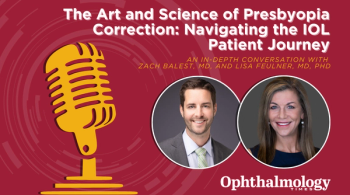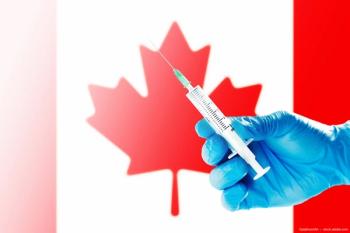
How Big Data is changing the game in cataract surgery
By 2020, there will be over 5,200 gigabytes of data available for every individual worldwide, she said.Ophthalmology seems ready for Big Data as evidenced by the findings dating back to the 1990s.
It would not be an exaggeration to state that cataract surgery technology has advanced massively over the past century.
At that point in time, Edward Jackson, MD, considered 20/200 or better vision postoperatively a step forward following cataract extraction using a technique called couching, in which a needle was used to poke cataracts out of the visual axis.
The innovations in cataract surgery then advanced to intracapsular cataract extraction during which an incision was made in the eye and the cataract was pulled out with a cryoprobe.
This technique achieved 20/200 or better vision in 96% of patients compared with the 22% who achieved that level with couching, Anne Louise Coleman, MD, PhD, recounted as she delivered the Jackson Memorial Lecture titled “Using Big Data to Make Discoveries about Cataract Surgery” at the 2015 American Academy of Ophthalmology (AAO) meeting.
By comparison, 99% of patients now have 20/200 or better and 61% have 20/20 or better after cataract surgery.
However, Dr. Coleman, professor of ophthalmology, Stein Eye Institute, David Geffen School of Medicine, University of California Los Angeles (UCLA), questioned why 1% of patients today have an inferior level of vision despite technologic advances. She pointed out that though it is rare, a small percentage of patients develop endophthalmitis or another infection postoperatively.
At this point, the concept of Big Data enters. “Big Data is defined by the three Vs: volume, variety, and velocity,” Dr. Coleman said.
Volume indicates the great deal of data that can be observed and tracked; variety indicates the different data types, i.e., digital images or visual fields that are combined by data fusion; and velocity indicates the data available in real time for use, she explained.
By 2020, there will be over 5,200 gigabytes of data available for every individual worldwide, she said.
Ophthalmology seems ready for Big Data as evidenced by the findings dating back to the 1990s.
Various cataract surgery databases such as the Medicare Claims Database, the Veterans Administration Hospital National Patient Care Database, and the Kaiser Permanente Northern California Database have analyzed the incidence rates of endophthalmitis after intracapsular cataract surgery and found similar annual rates ranging from 0.17% and 0.12% after extracapsular cataract surgery.
The Swedish National Cataract Surgery Register found a rate of 0.03%.
Dr. Coleman speculated that the rate of endophthalmitis in the United States is now similar.
To test this, she and her team from UCLA and the Hoskins Center for Quality Eye Care, the AAO’s qualitative care and health policy research center, analyzed outcomes from cataract surgeries performed from 2010 to 2013 in the Medicare Claims Database and from 2013 to 2014 from the Iris Registry, a longitudinal clinical data registry maintained by the AAO.
In addition to the endophthalmitis rates, the investigators also analyzed the postoperative visual acuity.
“In the Medicare Claims Database, out of about 217,000 cataract surgeries, there were 300 cases of endophthalmitis during the year, for a rate of 0.14% that was similar to the other Medicare Claims studies,” Dr. Coleman reported. “In the Iris Registry, there were 511,000 cataract surgeries with 400 cases of endophthalmitis for a rate of 0.08%.”
When the investigators evaluated the endophthalmitis rate by eye, the Iris Registry had 441 cases of endophthalmitis for an annual rate of 0.06%.
A total of 41 patients had endophthalmitis in both eyes after cataract surgery was performed in both eyes.
Dr. Coleman wanted to identify the reasons why the endophthalmitis rates differed between the Iris Registry and the Medicare Claims Database, of which the Iris Registry rates were lower.
“First, they are different patient populations. The patients in the Iris Registry were younger and the risk of endophthalmitis increases with age,” she explained.
“Second, there may have been ascertainment bias; when patients follow-up with a doctor not participating in the Iris Registry. Third, in the Medicare Claims Database it was unknown if the eye with endophthalmitis is the same eye that underwent cataract surgery.”
Regarding the visual outcomes in the Iris Registry, the preoperative Snellen acuity was an average 20/50. One month postoperatively, that improved to an average of 20/30.
A problem with analyzing outcomes after cataract surgery is the loss of patients to follow-up for various personal reasons, Dr. Coleman said, possibly indicating successful outcomes because of the absence of a postoperative problem requiring medical attention, but this result is missing follow-up data.
One caveat attached to the use of Big Data, she advised, is that it can only show associations.
“By itself, Big Data cannot establish causation,” she said. “In addition, if surgeons do not measure or record an observation, it cannot be analyzed or controlled for.”
Further, she said, clinical insight is needed to interpret data and any findings.
“Without the clinical insight into my own patients’ reluctance to return for follow-up after cataract surgery, I might have a hard time interpreting the poor follow-up of cataract surgery patients,” she said.
Dr. Coleman underscored the importance of ophthalmologists recognizing the impact of Big Data.
Dr. Coleman said ophthalmologists can use Big Data to improve care and compare their practices and surgeries with national benchmarks.
“This knowledge can lead to our becoming better and better, which is desired. Data breaches are problematic,” she said. “In the Iris Registry, the vendor is HIPPA compliant and the data are encrypted to minimize security breaches.”
Big Data is an analytic tool that should be complemented with other large cohort studies and randomized clinical trials, she said. It can also give new ideas for future research while helping to find subjects for those trials, she said.
“Big Data will continue to get bigger and bigger,” she said. “The discoveries made with the Iris Registry will help improve care and decrease the rate of endophthalmitis in the future. Knowledge is power and Big Data will give us knowledge.”
Newsletter
Don’t miss out—get Ophthalmology Times updates on the latest clinical advancements and expert interviews, straight to your inbox.


















































.png)


